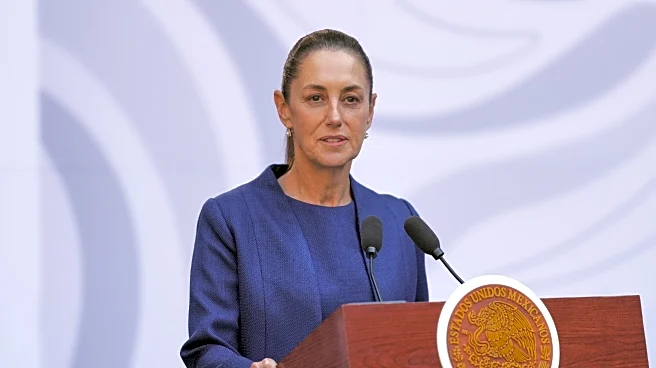What's Happening?
Defense Secretary Pete Hegseth announced a significant shift in the Pentagon's approach to acquiring and deploying technology. During a speech on November 7, Hegseth stated that the Department of Defense (DoD)
will prioritize systems that meet 85% of requirements, allowing for iterative improvements over time. This change aims to address the lengthy timelines associated with achieving a 100% solution, which often involve extensive testing and technological development. Industry executives, including Margaret Boatner from the Aerospace Industries Association, highlighted the need for performance tradeoffs to expedite deployment. The reform reflects a cultural shift within the DoD, focusing on reducing acquisition risk to decrease operational risk. Steve Harris from the Professional Services Council emphasized the importance of this change in the department's overall culture. The initiative is driven by the need to respond to pacing threats and adversaries moving at unprecedented speeds.
Why It's Important?
The Pentagon's acquisition reform is crucial for maintaining the U.S. military's competitive edge in technology deployment. By prioritizing speed over perfection, the DoD aims to address the rapid advancements of adversaries and pacing threats. This approach could lead to faster integration of new technologies into military operations, enhancing readiness and capability. The reform also signifies a shift in the DoD's risk tolerance, potentially influencing broader government acquisition strategies. Companies like Shield AI, which focus on developing minimum viable products, stand to benefit from this change, as it lowers barriers to entry and incentivizes speed. The reform could lead to increased collaboration between the DoD and tech startups, fostering innovation and accelerating the deployment of cutting-edge technologies.
What's Next?
The Pentagon's new acquisition strategy is expected to prompt further discussions and adjustments within the defense industry. As the DoD implements this approach, stakeholders will likely evaluate its impact on operational effectiveness and risk management. Industry leaders may need to adapt their development processes to align with the DoD's emphasis on speed and iterative improvements. Additionally, the reform could influence future policy decisions regarding defense spending and technology acquisition. The DoD's focus on reducing acquisition timelines may lead to increased investment in technologies that can be rapidly deployed and iterated. As the reform progresses, the defense industry will closely monitor its effects on competition, innovation, and collaboration between government and private sector entities.
Beyond the Headlines
The Pentagon's acquisition reform may have broader implications for the defense industry's culture and practices. By prioritizing speed and iterative development, the DoD is challenging traditional norms that emphasize perfection and exhaustive testing. This shift could lead to a reevaluation of risk management strategies and performance metrics within the industry. The reform also highlights the growing importance of agility and adaptability in defense technology development. As the DoD embraces this new approach, it may influence other government agencies to reconsider their acquisition strategies, potentially leading to a more dynamic and responsive public sector. The emphasis on speed and iteration could also drive innovation in defense technology, encouraging companies to explore new methodologies and technologies to meet evolving military needs.













